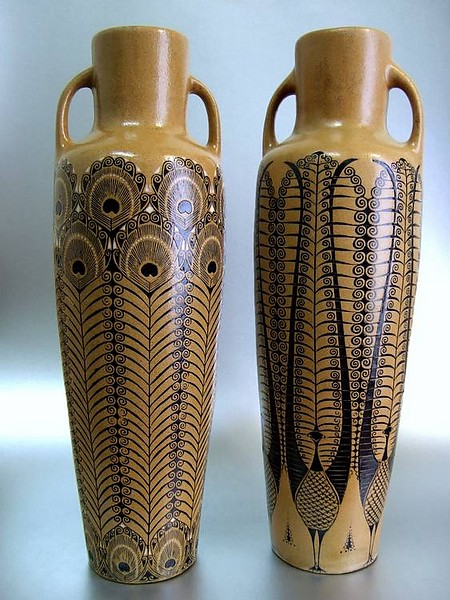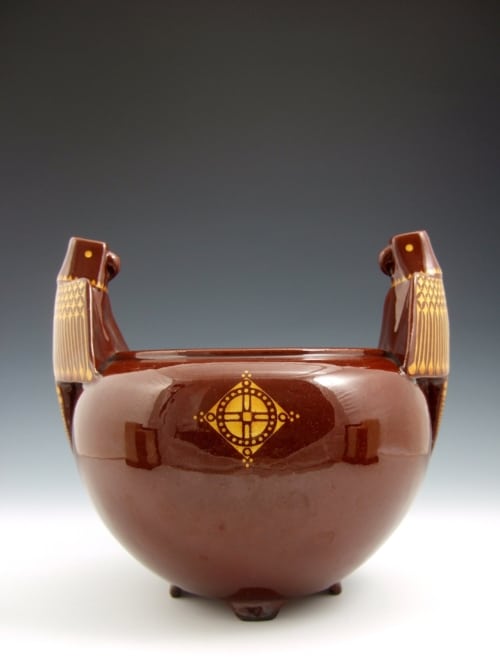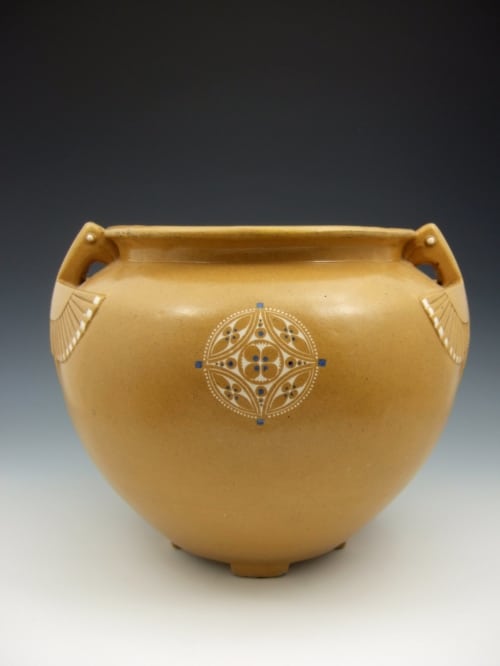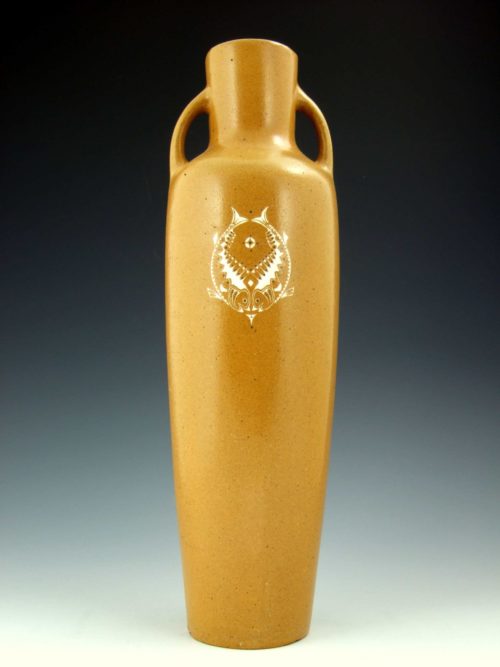Amstelhoek Earthenware Factory
 Amstelhoek Earthenware Factory
Amstelhoek Earthenware Factory
Amstelhoek Earthenware Factory in Amsterdam endeavored to produce affordable earthenware with good, simple forms. The designers Chris van der Hoef and Lambertus Zijl accomplished this goal by creating instantly recognizable vases with sober shapes and sparse decorations.
Amstelhoek was established by goldsmith Willem Christiaan Hoeker in 1894, to produce both decorative metal objects and earthenware. G.M. Augustijn, who was the technician until 1902, implemented the ‘ringeloor’ and intarsia techniques. Chris van der Hoef strove for a certain amount of simplicity in both shape and color. He created several sober forms together with Lambertus Zijl that were based on classical Greek vases. The vases were executed in dark colors (dark red, brown and a deep green) and decorated with heavily stylized geometrical or animal figures. The sparse decoration was considered secondary to the shape of the object, which was influenced by H.P. Berlage’s vision to strive towards a unity between form and decoration.
Van der Hoef left when the factory went out of business in 1903. The earthenware section was acquired, and continued as The Former Household and Decorative Earthenware Factory. The factory mainly manufactured products based on older models by Zijl and Van der Hoef and designs by Lambeek, until they acquired Haga from Purmerend in 1907, after which more models were added to the production line. The factory was eventually sold to De Distel in 1910.




